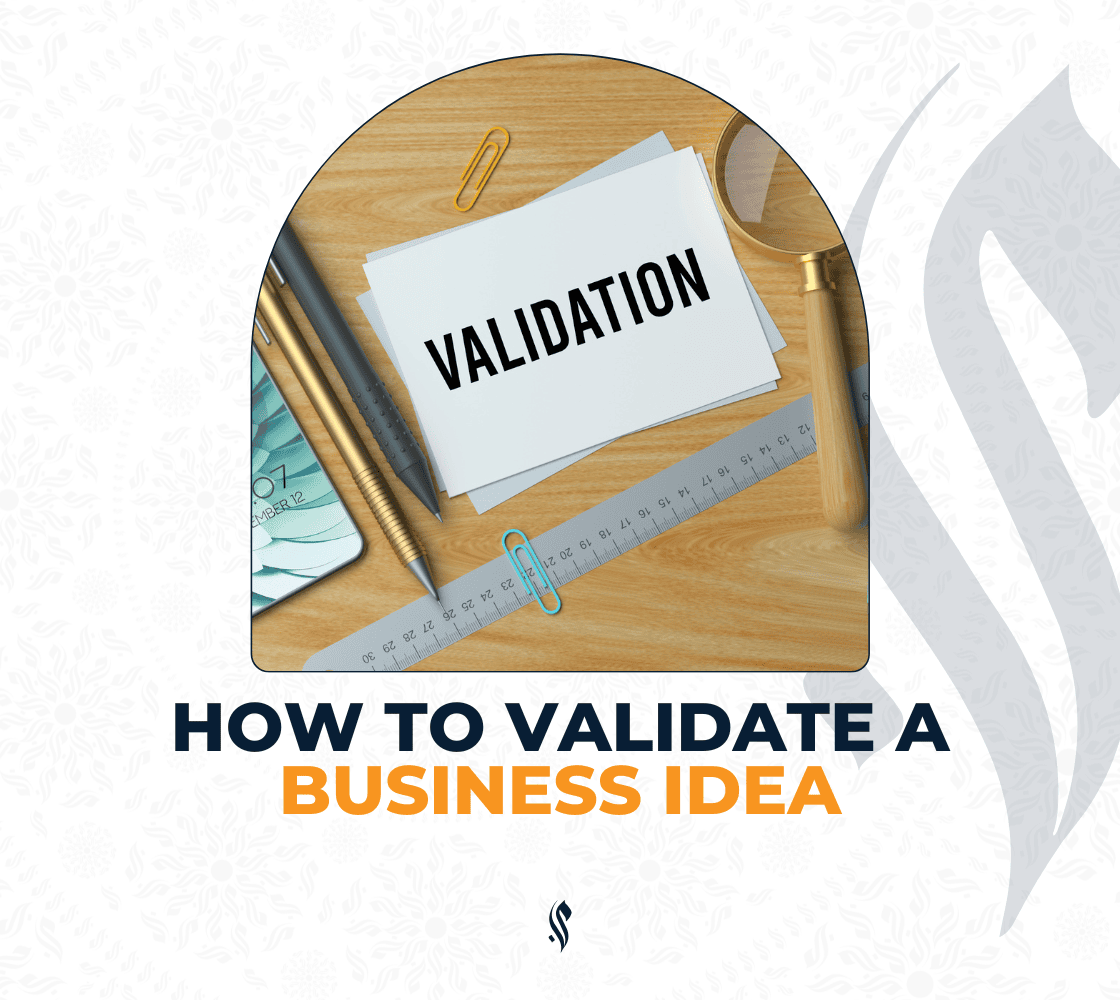

I firmly believe that the first step toward building a successful enterprise is to validate your business idea. In today’s competitive market, ensuring that your idea meets real needs and can grow sustainably is paramount. This guide walks you through ten essential steps, from understanding customer pain points to monitoring key metrics, helping you move from concept to a viable business.
1. Understand Customer Pain Points
In business, "pain points" refer to specific problems, challenges, or frustrations that customers or businesses experience. Identifying these pain points is crucial because it allows you to create products or services that directly address those needs, offering solutions and improvements.
For individual customers, pain points can include:
- Functional Issues: Problems related to a product or service not performing as expected.
- Financial Constraints: Difficulties related to cost, such as high prices or unexpected fees.
- Inconvenience: Challenges in accessing or using a product or service.
- Lack of Support: Inadequate customer service or assistance.
- Emotional Stress: Negative feelings or dissatisfaction associated with a product or service.
For businesses, pain points can involve:
- Operational Inefficiencies: Problems with processes, costs, or resource management.
- Market Challenges: Difficulties reaching target audiences or competing effectively.
- Employee Issues: Problems related to team morale, productivity, or retention.
- Financial Risks: Difficulties with cash flow, funding, or financial stability.
By thoroughly understanding these pain points, you can develop targeted solutions that meet genuine customer needs and build a successful business. This approach is fundamental to creating value and ensuring long-term sustainability. This customer-centric approach is not only a sound business strategy but also resonates with the Islamic principle of serving humanity and relieving hardship. In the Qur’an, Allah (سبحانه وتعالى) reminds us:
"And whoever saves one [a life] - it is as if he had saved mankind entirely" (Surah Al-Maidah chapter 5: verse 32).
While this verse speaks broadly to the value of saving lives, it also reminds us to look for ways to alleviate difficulties in others’ lives, including through innovative business solutions.
2. Analyze Your Target Market
A great business idea needs customers. Before investing, identify your target market: who are your potential buyers? This helps determine if your idea is profitable and sustainable.
For example, a product for all pet owners has a large market. But a product for only lizard owners has a much smaller one.
To analyze your target market:
- Create customer profiles using demographics and psychographics.
- Analyze your current customers for patterns.
- Evaluate your market's size and growth potential.
- Research online search volume for your niche.
Understanding your target market ensures you create a product or service that meets real needs, making your business more likely to succeed.
3. Define a Unique Value Proposition
3. Define a Unique Value Proposition
A clear and compelling Unique Value Proposition (UVP) distinguishes your business from the competition. It is a succinct statement that articulates why your solution is unique and how it addresses your customers’ problems better than any other option available.
Your UVP should be:
- Clear: Explain exactly what you offer.
- Unique: Highlight what sets you apart from competitors.
- Valuable: Describe the benefits your customers will receive.
- Relevant: Connect with the specific needs and desires of your target market.
A strong UVP is your promise to your customers. It tells them why they should choose your product or service over others. As muslim entrepreneurs, clarity in your value proposition helps streamline your focus and messaging, ensuring that every decision you make is aligned with delivering true value.
Subscribe to Muslim Founder's Newsletter
The only newsletter you need to start & grow your Muslim business, Insha'Allah.
100% Free. No Spam Guaranteed.
4. Collect Feedback
4. Collect Feedback
Gathering feedback is crucial for validating your idea. This involves sharing your concept with potential users, mentors, and industry experts. Use various tools, online surveys, one-on-one interviews, focus groups to collect honest insights about your idea’s strengths and weaknesses.
Remember the importance of consultation, as emphasized in the Qur’an:
"And consult with your relatives in the matter..."
(Surah Aal-‘Imran 3:159)
This verse encourages us to seek the counsel of others before making decisions. In the context of your business, consulting your target audience and industry peers can provide the critical perspectives needed to refine your idea.
Feedback is only valuable if you use it to make meaningful adjustments. Look for recurring themes and patterns in the feedback you receive. Identify which aspects of your idea resonate with your audience and which require improvement.
The iterative process of adaptation is key to product-market fit. Be willing to pivot your strategy or adjust your features to better match customer expectations. This process of continuous improvement not only strengthens your business idea but also reflects the Islamic ethos of constant self-improvement and seeking excellence in every endeavor.
6. Evaluate Scalability
Scalability is a critical factor in determining the long-term success of your business. Evaluate whether your business can grow efficiently without proportionally increasing costs. Consider:
- Operational Scalability: Can your business processes handle increased production or demand?
- Financial Scalability: Will revenue growth be sustainable without equally rising expenses?
- Technical Scalability: Is your technology infrastructure capable of supporting growth?
Assessing scalability helps ensure that your idea is not just viable on a small scale but can expand to meet the demands of a growing market. In doing so, you position your business to attract investors who seek sustainable growth and robust returns.
7. Craft a Feasible Business Model
A comprehensive business model is the blueprint that outlines how your business creates, delivers, and captures value. This model should cover your revenue streams, cost structures, key partnerships, customer channels, and strategies for acquiring and retaining customers.
A well-thought-out business model not only guides your operations but also reassures investors and stakeholders that your business has a clear path to profitability. Ensure that every element of your model is aligned with the overall vision and strategy of your enterprise.
8. Test Different Pricing Strategies
8. Test Different Pricing Strategies
Pricing is a critical component of your business strategy. It must align with your target market’s expectations while ensuring profitability. Experiment with various pricing models, A/B testing different price points, using dynamic pricing, or offering discounts to determine what your customers are most willing to pay.
The right pricing strategy can significantly influence the perception of your brand and the overall success of your product. It’s essential to find the sweet spot where your value meets customer willingness to pay without undervaluing your offer.
9. Create a Landing Page or Prototype
Once you’ve refined your idea through feedback and analysis, create a tangible representation of your product, a prototype or a dedicated landing page. This step is about showcasing your concept to the public and gauging real-world interest.
Your landing page should feature a compelling headline, engaging visuals, clear copy, and a call-to-action (CTA). It’s not only a marketing tool but also a validation mechanism that measures how many people are interested in your product. A strong landing page can help you build an email list, gather early sign-ups, and generate buzz even before the full launch.
10. Monitor Key Metrics
10. Monitor Key Metrics
The business idea validation process does not end with the launch of your landing page or prototype. Continuous monitoring of key performance metrics is essential to understand your progress and make necessary adjustments. Key metrics to track include:
- Customer Acquisition Cost (CAC):The cost of acquiring a new customer.
- Conversion Rate: The percentage of visitors who take the desired action.
- Customer Lifetime Value (CLV): The total revenue expected from a single customer.
- Gross Margin: The revenue remaining after deducting the cost of goods sold.
- Return on Investment (ROI): The profitability of your investments in marketing and development.
By keeping a close eye on these indicators, you can fine-tune your strategies and ensure that your business remains on a path of sustainable growth.
Validating your business idea is an ongoing journey, one that requires a blend of rigorous research, honest feedback, and the willingness to adapt. For aspiring Muslim entrepreneurs, this process is not only a business necessity but also a reflection of our commitment to integrity, service, and continuous improvement.
Remember, as you embark on this entrepreneurial journey, to do your best and trust in Allah. The Prophet ﷺ said:
“Tie your camel and trust in Allah.”
(Sunan al-Tirmidhi 2517, Hasan)
This means taking proactive steps while also having faith that your efforts will be rewarded when you act with diligence and sincerity.
By following these ten steps, you’re well on your way to turning a rough idea into a thriving business. The blend of practical business strategies and time-tested principles will help ensure that your venture not only meets market demands but also aligns with your values.
May your journey be guided by wisdom, perseverance, and ethical leadership. With careful planning, continuous learning, and a commitment to excellence, your business idea can become the foundation for a legacy of success and service.
Subscribe to Muslim Founder's Newsletter
The only newsletter you need to start & grow your Muslim business, Insha'Allah.
100% Free. No Spam Guaranteed.

